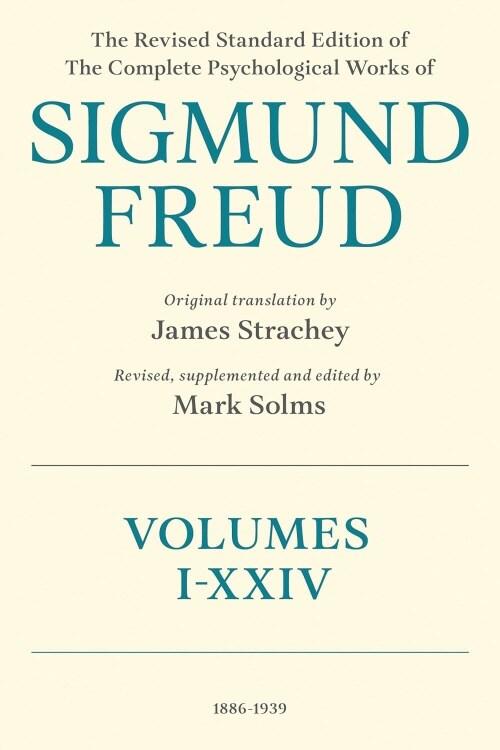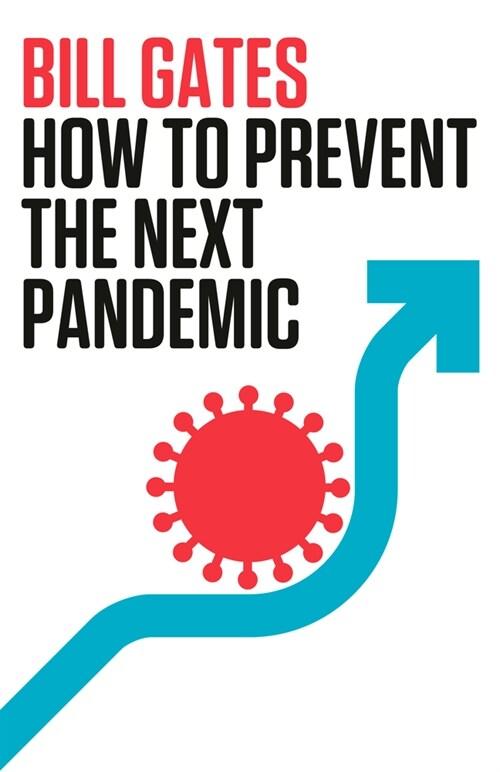책 이미지

책 정보
· 분류 : 외국도서 > 의학 > 전염병학
· ISBN : 9781848212220
· 쪽수 : 384쪽
목차
I Probabilistic models 1
1 The Rasch model for dichotomous items 3
1.1 Introduction 4
1.1.1 original formulation of the model 4
1.1.2 Modern formulations of the model 7
1.2 Psychometric properties 8
1.2.1 Requirements of IRT models 9
1.2.2 Item Characteristic Curves 10
1.2.3 Guttman errors 10
1.2.4 Implicit assumptions 11
1.3 Statistical properties 11
1.3.1 The distribution of the total score 12
1.3.2 Symmetrical polynomials 13
1.3.3 Test characteristic curve (TCC) 14
1.3.4 Partial credit model parametrization of the score distribution 14
1.3.5 Rasch models for subscores 15
1.4 Inference frames 15
1.5 Specic objectivity 18
1.6 Rasch models as graphical models 19
1.7 Summary 20
2 Rasch models for ordered polytomous items 25
2.1 Introduction 26
2.1.1 Example 26
2.1.2 Ordered categories 26
2.1.3 Properties of the Polytomous Rasch model 30
2.1.4 Assumptions 32
2.2 Derivation from the dichotomous model 32
2.3 Distributions derived from Rasch models 37
2.3.1 The score distribution 37
2.3.2 Interpretation of thresholds in partial credit items and Rasch
scores 39
2.3.3 Conditional distribution of item responses given the total score 39
2.4 Conclusion 39
2.4.1 Frames of inference for Rasch models 40
II Inference in the Rasch model 45
3 Estimation of item parameters 47
3.1 Introduction 48
3.2 Estimation of item parameters 50
3.2.1 Estimation using the conditional likelihood function 50
3.2.2 Pairwise conditional estimation 52
3.2.3 Marginal likelihood function 54
3.2.4 Extended likelihood function 55
3.2.5 Reduced rank parametrization 56
3.2.6 Parameter estimation in more general Rasch models 56
4 Person parameter estimation and measurement in Rasch models 59
4.1 Introduction and notation 60
4.2 Maximum likelihood estimation of person parameters 61
4.3 Item and test information functions 62
4.4 Weighted likelihood estimation of person parameters 63
4.5 Example 63
4.6 Measurement quality 65
4.6.1 Reliability in classical test theory 66
4.6.2 Reliability in Rasch models 67
4.6.3 Expected measurement precision 69
4.6.4 Targeting 69
III Checking the Rasch model 75
5 Itemt statistics 77
5.1 Introduction 78
5.2 Rasch model residuals 79
5.2.1 Notation 79
5.2.2 Individual response residuals: outts and ints 80
5.2.3 Group residuals 85
5.2.4 Group residuals for analysis of homogeneity 85
5.3 Molenaar's U 87
5.4 Analysis of item { restscore association 88
5.5 Group residuals and analysis of DIF 89
5.6 Kelderman's conditional likelihood ratio test of no DIF 90
5.7 Test for conditional independence in three-way tables 92
5.8 Discussion and recommendations 93
5.8.1 Technical issues 93
5.8.2 What to do when items do not agree with the Rasch model 95
6 Over-all tests of the Rasch model 99
6.1 Introduction 100
6.2 The conditional likelihood ratio test 100
6.3 Example: Diabetes and Eating habits 102
6.4 Other over-all tests of t 104
7 Local dependence 107
7.1 Introduction 108
7.1.1 Reduced rank parametrization model for sub tests 108
7.1.2 Reliability indexes 109
7.2 Local dependence in Rasch Models 109
7.2.1 Response dependence 110
7.3 E
ects of response dependence on measurement 111
7.4 Diagnosing and detecting response dependence 114
7.4.1 Item t 114
7.4.2 Item residual correlations 116
7.4.3 Sub tests and reliability 118
7.4.4 Estimating the magnitude of response dependence 118
7.4.5 Illustration 119
7.5 Summary 124
8 Two tests of local independence 131
8.1 Introduction 132
8.2 Kelderman's conditional likelihood ratio test of local independence 132
8.3 Simple conditional independence tests 134
8.4 Discussion and recommendations 136
9 Dimensionality 139
9.1 Introduction 140
9.1.1 Background 140
9.1.2 Multidimensionality in health outcome scales 141
9.1.3 Consequences of multidimensionality 142
9.1.4 Motivating example: the HADS data 142
9.2 Multidimensional models 143
9.2.1 Marginal likelihood function 144
9.2.2 Conditional likelihood function 144
9.3 Diagnostics for detection of multidimensionality 144
9.3.1 Analysis of residuals 145
9.3.2 Observed and expected counts 145
9.3.3 Observed and expected correlations 147
9.3.4 The t-test approach 148
9.3.5 Using reliability estimates as diagnostics of multidimensionality 149
9.3.6 Tests of unidimensionality 150
9.4 Estimating the magnitude of multidimensionality 152
9.5 Implementation 153
9.6 Summary 153
IV Applying the Rasch model 161
10 The polytomous Rasch model and the equating of two instruments163
10.1 Introduction 164
10.2 The polytomous Rasch model 165
10.2.1 Conditional probabilities 166
10.2.2 Conditional estimates of the instrument parameters 167
10.2.3 An illustrative small example 169
10.3 Reparametrization of the thresholds 170
10.3.1 Thresholds reparametrized to two parameters for each instrument170
10.3.2 Thresholds reparametrized with more than two parameters 174
10.3.3 A reparametrization with four parameters 174
10.4 Tests of Fit 176
10.4.1 The conditional test of fit based on cell frequencies 176
10.4.2 The conditional test of fit based on class intervals 177
10.4.3 Graphical test of fit based on total scores 178
10.4.4 Graphical test of fit based on person estimates 179
10.5 Equating procedures 179
10.5.1 Equating using conditioning on total scores 180
10.5.2 Equating through person estimates 180
10.6 Example 180
10.6.1 Person threshold distribution 182
10.6.2 The test of
t between the data and the model 182
10.6.3 Further analysis with the parametrization with two moments
for each instrument 184
10.6.4 Equated scores based on the parametrization with two moments
of the thresholds 190
10.7 Discussion 194
11 A multidimensional latent class Rasch model for the assessment of
the Health-related Quality of Life 199
11.1 Introduction 200
11.2 The dataset 202
11.3 The multidimensional latent class Rasch model 205
11.3.1 Model assumptions 205
11.3.2 Maximum likelihood estimation and model selection 208
11.3.3 Software details 209
11.3.4 Concluding remarks about the model 210
11.4 Inference on the correlation between latent traits 211
11.5 Application results 214
12 Analysis of Rater Agreement by Rasch and IRT models 223
12.1 Introduction 224
12.2 An IRT model for modelling inter-rater agreement 224
12.3 Umbilical artery Doppler velocimetry and perinatal mortality 226
12.4 Quantifying the rater agreement in the Rasch model 227
12.4.1 Fixed Effects Approach 227
12.4.2 Random Effects approach and the median odds ratio 229
12.5 Doppler velocimetry and perinatal mortality 231
12.6 Quantifying the rater agreement in the IRT model 232
12.7 Discussion 233
13 From Measurement to Analysis: two steps or latent regression? 241
13.1 Introduction 242
13.2 Likelihood 243
13.2.1 Two-step model 244
13.2.2 Latent regression model 244
13.3 First step: Measurement models 245
13.4 Statistical Validation of Measurement Instrument 248
13.5 Construction of Scores 251
13.6 Two-step method to Analyze Change between Groups 253
13.6.1 Health related Quality of Life and Housing in Europe 253
13.6.2 Use of Surrogate in an Clinical Oncology trial 254
13.7 Latent Regression to Analyze Change between Groups 257
13.8 Conclusion 259
14 Analysis with repeatedly measured binary item response data byad
hoc Rasch scales 265
14.1 Introduction 266
14.2 The generalized multilevel Rasch model 268
14.2.1 The multilevel form of the conventional Rasch model for binary
items 268
14.2.2 Group comparison and repeated measurement 269
14.2.3 Differential item functioning and local dependence 270
14.3 The analysis of an ad hoc scale 272
14.4 Simulation study 277
14.5 Discussion 283
V Creating, translating, improving Rasch scales 287
15 Writing Health-Related Items for Rasch Models - Patient Reported
Outcome Scales for Health Sciences: From Medical Paternalism to
Patient Autonomy 289
15.1 Introduction 290
15.1.1 The emergence of the biopsychosocial model of illness 290
15.1.2 Changes in the consultation process in general medicine 291
15.2 The use of patient reported outcome questionnaires 292
15.2.1 Defining PRO constructs 293
15.2.2 Quality requirements for PRO questionnaires 298
15.3 Writing new Health-Related Items for new PRO scales 301
15.3.1 Consideration of measurement issues 302
15.3.2 Questionnaire Development 302
15.4 Selecting PROs for a clinical setting 305
15.5 Conclusions 305
16 Adapting patient-reported outcome measures for use in new lan-
guages and cultures 313
16.1 Introduction 314
16.1.1 Background 314
16.1.2 Aim of the adaptation process 315
16.2 Suitability for adaptation 315
16.3 Translation Process 315
16.3.1 Linguistic Issues 316
16.3.2 Conceptual Issues 316
16.3.3 Technical Issues 316
16.4 Translation Methodology 317
16.4.1 Forward-backward translation 317
16.5 Dual-Panel translation 318
16.6 Assessment of psychometric and scaling properties 320
16.6.1 Cognitive debriefing interviews 320
16.6.2 Determining the psychometric properties of the new language
version of the measure 322
16.6.3 Practice Guidelines 323
17 Improving items that do not fit the Rasch model 329
17.1 Introduction 330
17.2 The Rasch model and the graphical log linear Rasch model 330
17.3 The scale improvement strategy 332
17.3.1 Choice of modificational action 335
17.3.2 Result of applying the scale improvement strategy 339
17.4 Application of the strategy to the Physical Functioning Scale of the
SF-36 340
17.4.1 Results of the GLLRM 340
17.4.2 Results of the subject matter analysis 341
17.4.3 Suggestions according to the strategy 342
17.5 Closing remark 345
VI Analyzing and reporting Rasch models 349
18 Software and program for Rasch Analysis 351
18.1 Introduction 352
18.2 Stand alone softwares packages 352
18.2.1 WINSTEPS 352
18.2.2 RUMM 353
18.2.3 Conquest 353
18.2.4 DIGRAM 354
18.3 Implementations in standard software 355
18.3.1 SAS macro for MML estimation: %ANAQOL 355
18.3.2 SAS Macros based on CML 356
18.3.3 eRm : an R Package 356
18.4 Fitting the Rasch model in SAS 356
18.4.1 Simulation of Rasch dichotomous items 356
18.4.2 MML Estimation of Rasch parameters using Proc NLMIXED 357
18.4.3 MML Estimation of Rasch parameters using Proc GLIMMIX 358
18.4.4 CML Estimation of Rasch parameters using Proc GENMOD 358
18.4.5 JML Estimation of Rasch parameters using Proc LOGISTIC 359
18.4.6 Loglinear Rasch model Estimation of Rasch parameters using
Proc Logistic 360
18.4.7 Results 360
19 Reporting a Rasch analysis 363
19.1 Introduction 364
19.1.1 Objectives 364
19.1.2 Factors impacting a Rasch analysis report 364
19.1.3 The role of the substantive theory of the latent variable 366
19.1.4 The frame of reference 367
19.2 Suggested Elements 367
19.2.1 Construct: definition and operationalisation of the latent variable367
19.2.2 Response format and scoring 368
19.2.3 Sample and sampling design 368
19.2.4 Data 369
19.2.5 Measurement model and technical aspects 370
19.2.6 Fit analysis 370
19.2.7 Response scale suitability 371
19.2.8 Item fit assessment 372
19.2.9 Person fit assessment 372
19.2.10 Information 373
19.2.11Validated scale 374
19.2.12 Application and usefulness 375
19.2.13Further issues 376

















![[eBook Code] Statistical Models and Methods for Reliability and Survival Analysis (eBook Code, 1st)](/img_thumb/9781118826997.jpg)
![[eBook Code] Statistical Models and Methods for Reliability and Survival Analysis (eBook Code, 1st)](/img_thumb/9781118827161.jpg)
![[eBook Code] Rasch Models in Health (eBook Code, 1st)](/img_thumb/9781118574546.jpg)
![[eBook Code] Rasch Models in Health (eBook Code, 1st)](/img_thumb/9781118574447.jpg)





